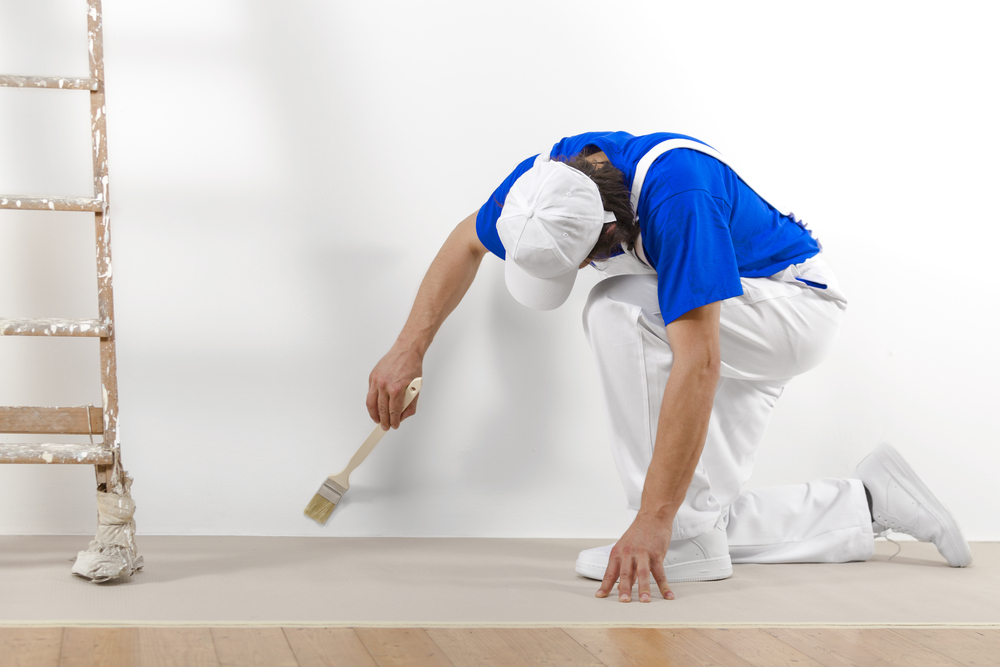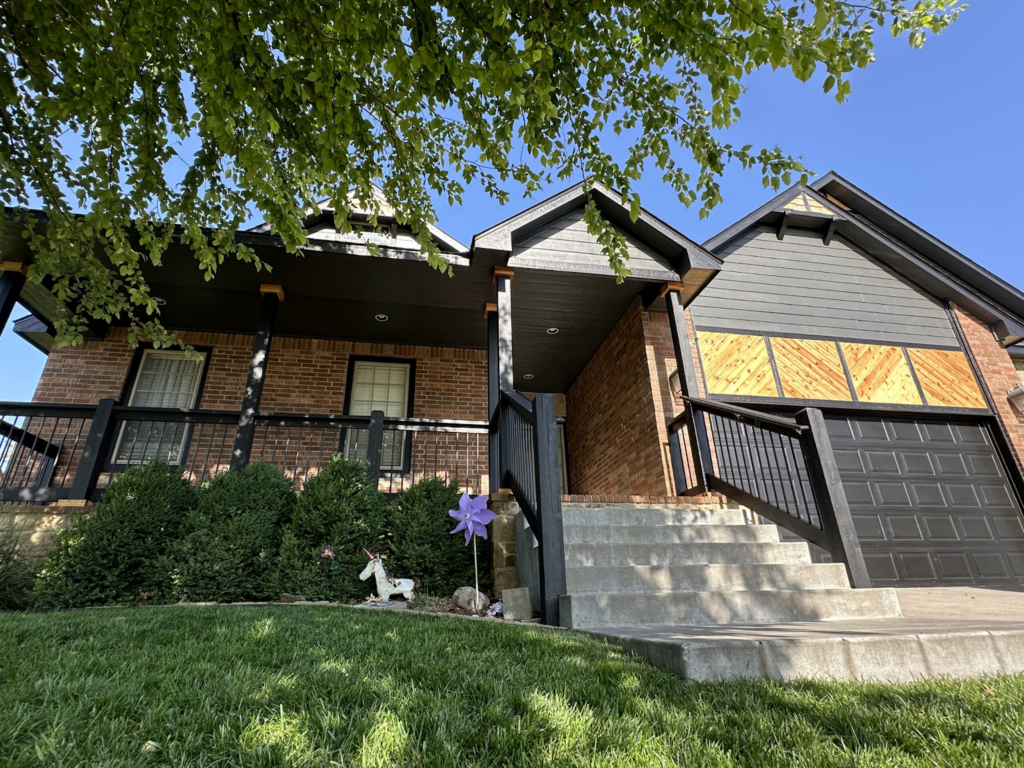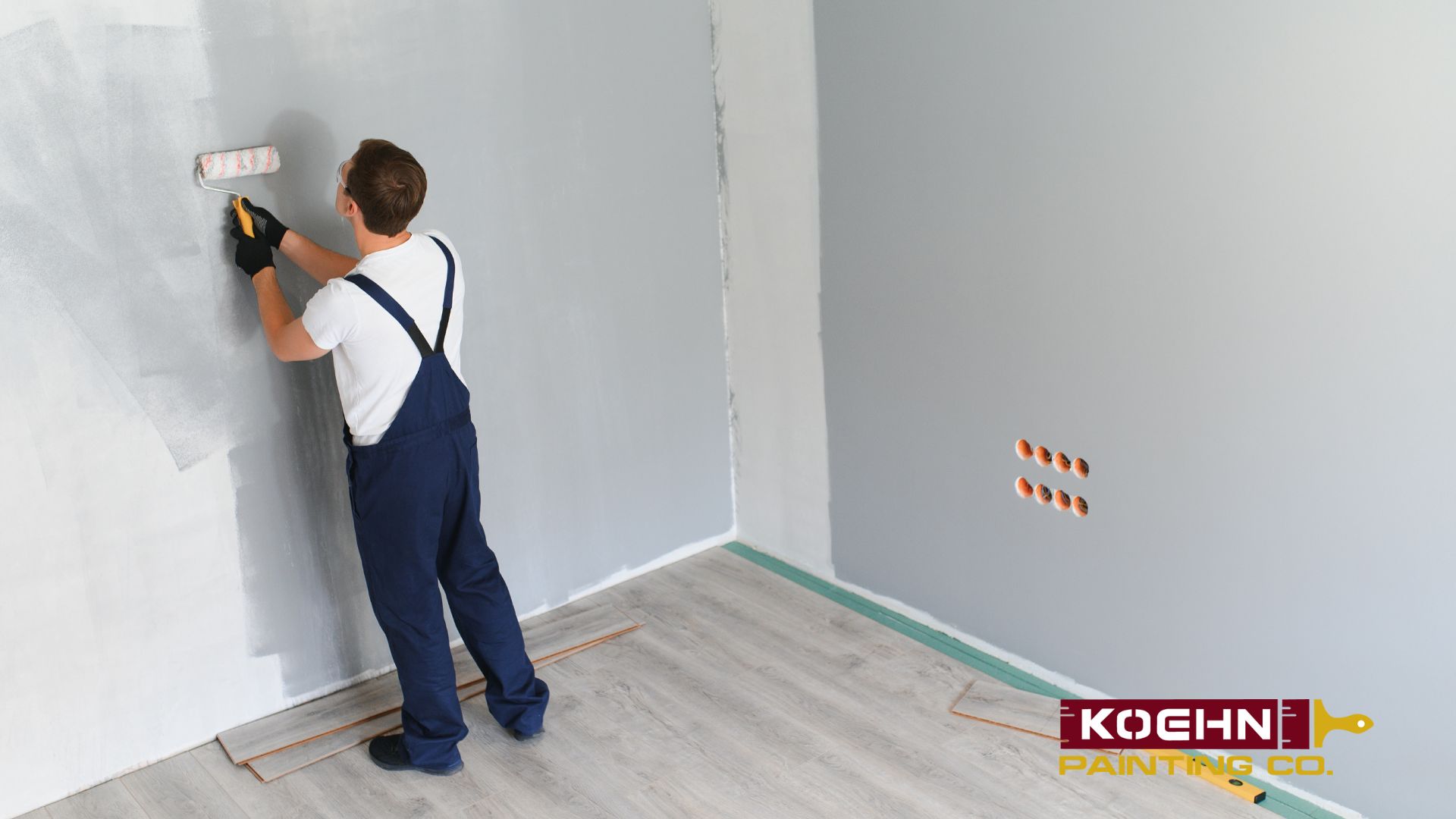Table of Contents
TogglePainting is one of the most effective ways to transform a space’s appearance and ambiance while protecting its surfaces. Although paint jobs ultimately yield similar results, there are distinctions among the various types of paint jobs. Exterior and interior painting should be approached differently to achieve the best and most enduring results.
These approaches can differ in painting techniques, types of paint, tools used, and various other factors. These variables rely on aspects such as which area is being painted and the final desired appearance. Understanding this is crucial for ensuring that both exterior and interior painting are done correctly.
Painting, whether interior or exterior, is ultimately about aesthetics but also serves functional purposes. For example, interior painting can influence the ambiance of a room, making it feel more warm and inviting. Exterior painting can help protect a building from the natural elements while enhancing its aesthetics.
Both exterior and interior painting have their own unique challenges within the general parts of the painting process that they share, from color selection to finding the right type of paint to knowing which equipment would yield the most polished result. These challenges are handled differently due to the differences in the functions of exterior and interior painting.
Understanding these differences is knowing how to tackle these challenges, which is why it is necessary to explore these key distinctions, benefits, and expert recommendations for exterior and interior painting projects. To get the most out of professional painting services, one should first understand all the services can entail and make informed decisions based on the space’s painting needs and desired look.
Choosing the Right Types of Paint for Residential Interior Painting and Exterior Painting

One of the most important differences between exterior and interior painting is the types of paint used for each project. Because each type of paint job serves a unique purpose (aside from the surface-level appeal), it needs to have specific characteristics to ensure that it is able to function the way it should. When it comes to residential interior painting, the paint needs to do more than just sit on the walls and make the room look pretty.
Rather, the process involves a good deal of planning to be able to both enhance the look of a space and resist the wear and tear that can come over time in a busy household. A good residential interior painting job plays a critical role in home improvement in many ways, including the following:
- Aesthetic Appeal and Customization: These are the biggest and most important reasons for any paint job, and they are particularly prioritized for residential interior painting. When it comes to someone’s home, aesthetics can influence important things like comfort, a welcoming atmosphere, and even the perceived size of a room. The right paint color should reflect the personality of the homeowner while also tying into the overall design and decor of the home.
- Easy Maintenance: Paint, particularly premium, high-quality paints, can even contribute to overall home maintenance. In residential interior painting, high-quality paints can protect surfaces because they have been specially formulated to resist stains, scuffs, and moisture. This is particularly ideal for rooms that can get particularly messy, like the kitchen or bathroom.
- Health Considerations: While paints are known for being toxic and bad for one’s health if overly inhaled, there are actually paint options that can improve indoor air quality that are used in residential interior painting. Low-VOC (volatile organic compounds) are formulated to reduce toxic emissions, creating clean air for everyone in the household.
- Property Value Boost: The added benefit of a well-maintained and appealing property is an increase in its property value if the owner is interested in selling or leasing it. Quality residential interior painting can draw in potential buyers once a home is on the market.
Key Differences Between Interior and Exterior Paints
While residential interior painting shares some of these benefits with exterior painting, the latter has additional functions and benefits of its own that necessitate the use of different types of paint than the former. The most important differences between interior and exterior paints are in their composition, durability, and finishes. These differences ensure that each paint type is well-suited to its purpose.
- Interior Paint: Because residential interior painting happens indoors in enclosed spaces, these paints are designed with visual appeal and breathability in mind. Interior paints come in a variety of colors and smooth finishes to match homeowners’ tastes. They are also low-VOC and safe for indoor use. They are easier to clean and maintain, and some can even boost natural light to make a room seem larger and more open.
- Exterior Paint: On the other hand, exterior paints are formulated to withstand harsh outside conditions, such as fluctuating temperatures and exposure to UV rays, snow, and rain. The paint also contains additives to help it resist fading, mold, and mildew caused by exposure to the elements. Exterior paints are often more flexible, preventing cracking from the expansion and contraction of walls caused by temperature fluctuations.
Understanding the Composition and Properties of Interior Paints

Because residential interior painting is all about enhancing the look of a space while maintaining its functionality, the paints used in this process are made with certain characteristics to help make this process as simple as possible with stunning end results. These key characteristics include:
- Smooth Application: Interior paint jobs need to have as smooth and polished a finish as possible, as aesthetics are their priority. The paint job is quite literally being done to be looked at and enjoyed by whoever has commissioned it. No homeowner wants to sit in a room in their home and notice imperfections in their wall colors. This is why interior paints are designed for smooth and easy application, reducing unsightly streaks and resulting in a polished finish.
- Low Odor and Low VOCs: And of course, indoor paints cannot be extremely toxic and endanger the health of those that regularly spend time in the enclosed spaces. One’s home is where one spends a large amount of time, so it is important that the air remains safe to breathe.
- Scuff and Stain Resistance: While exterior painting is concerned with withstanding nature, residential interior painting needs to withstand all the traffic that occurs in a busy household. The most durable interior paints are formulated with rigid resins and are Ideal for the most high-traffic areas of the home, like hallways, kitchens, living rooms, and any other areas where people regularly walk or gather. These interior paints make cleaning any spills, scuffs, or smudges much easier, keeping the home looking fresh.
- Various Finishes: Interior paints (as they prioritize aesthetics) also need to be able to suit many different tastes and personalities and match the design and style of many different homes. This is why they come in a much wider variety of finishes than exterior paints. For a residential interior painting project, a homeowner should be able to find their chosen color in options like matte, satin, eggshell, semi-gloss, and high-gloss. These finishes aren’t just about suiting styles and personalities; they are also important to the function of a space. For example, a semi-gloss finish suits areas that are cleaned frequently because the high sheen makes cleaning easier.
- Drying Time: Interior spaces need to be used as soon as possible, even after a paint job. That’s why Interior paints are formulated to dry quickly, even without direct exposure to sunlight. This allows the paint job to be completed as quickly as possible so that people can enjoy their brand-new space.
Understanding the Composition and Properties of Exterior Paints
Where residential interior painting places aesthetics before all other paint purposes, exterior painting prioritizes durability, though it does so without sacrificing aesthetic appeal entirely. It is understood that exterior paints must endure harsh environmental conditions, and exploring the special characteristics that allow these paints to withstand specific conditions is crucial to understanding how their composition differs from interior paints.
- Weather Resistance: Naturally, paint meant for outdoor use must be made with the outdoors in mind. Harsh conditions like extreme temperatures, rain, snow, and humidity can lead to adverse effects such as cracking, chipping, or peeling over time. Exterior paints contain soft resins and other additives to make them more flexible, help them withstand these conditions, and make the paint job last as long as possible.
- UV Protection: Like harsh weather conditions, long-term exposure to the sun can negatively impact paint jobs and prematurely age them. Special additives in exterior paints help prevent the fading caused by UV rays, keeping the colors vibrant and fresh.
- Mildew and Mold Resistance: Weather conditions like rain and snow can lead to mold and mildew on surfaces, which can be aesthetically unappealing at best and structurally damaging at worst. Exterior paints, especially those used in humid and rainy climates, are formulated to prevent biological growth that can degrade the paint.
- Elasticity: The soft resins in exterior paints aid in flexibility, which is crucial to keep the paint from cracking and peeling when temperatures change rapidly. This flexibility allows expansion and contraction with temperature fluctuations, rather than the paints being too rigid and ultimately risking cracking in these situations.
- Stronger Adhesion: Exterior surfaces, such as brick, wood, and stucco, tend to be rougher than interior ones. Exterior paints are made to adhere to these rougher surfaces to ensure that the paint job remains durable and adheres to the surface for a long time and against harsh conditions.
When to Use Exterior Paint Indoors (And Why You Shouldn’t)
Many people might not think that the differences between exterior and interior paints are significant enough to matter much when they’re choosing paints for their painting project. After all, paint is paint, right?
Wrong! While using exterior paints indoors might seem like an acceptable idea due to their positive properties, like their increased durability and flexibility, there are actually negative effects to using these types of paints indoors. Not to mention, using them indoors robs the paint job of the tailored benefits of interior paints. Below are some important reasons why exterior paints do not work for residential interior painting:
- Higher VOC Levels: Exterior paints contain more toxins and volatile organic compounds than interior paints. Breathing in the toxic fumes from these paints, especially in enclosed spaces, can have harmful effects on one’s health, such as nausea, lightheadedness, and difficulty breathing. These effects pose a particular risk to children, the elderly, and those with respiratory disorders.
- Stronger Odors: Exterior paints also do not dry as quickly as interior paints, which can lead to a prolonged and overwhelming scent that can make spending time in indoor spaces unpleasant after a paint job.
- Indoor Performance Issues: While interior paints are formulated with rigid resins to help them resist the scuffs and stains that interior spaces experience through high traffic, the soft resins in exterior paints do not make them suitable for this level of wear and tear. Exterior paints also do not resist common indoor challenges like scrubbing, staining, and easy cleaning.
- Safety Concerns: The additives in exterior paints that make them resistant to mildew (known as mildewcides) can be very harmful to breathe in, much like the high levels of VOCs in these paints. When used in residential interior painting, they can even lead to respiratory problems and allergic reactions.
Contact us here if you would like to find the best painting contractor for your residential or commercial painting needs.
How a Residential Painting Company Can Expertly Guide You Through the Painting Process

Just as exterior and interior paints differ in composition due to their distinct purposes, different application techniques are used to get the best paint job with each type of paint. The average person does not understand the nuances of these painting techniques, which is why working with a residential painting company is critical for polished, durable work.
When hiring a residential painting company, it’s essential to choose professionals who understand the differences between exterior and interior painting and can guide their clients accordingly. A professional residential painting company can use its expert advice to save clients time and money while still providing efficient and high-quality results. Below are some of the main benefits of working with professional painters:
- Proper Surface Preparation: The painting process involves more than just slapping paint onto the wall, especially if one wants smooth and long-lasting results. Properly preparing the surfaces is integral to a smooth paint application and can even help the paint adhere better. A professional residential painting company knows how to do the right cleaning, sanding, patching, and priming before painting to ensure their clients get a paint job that is beyond satisfactory.
- High-Quality Paints: The higher the quality of the paint materials used, the stronger the final results will be. This applies not only to the look of the final result but also to its durability. While lower-quality paints might be cheaper upfront, they won’t stand the test of time like high-quality paints. With high-quality paints, one can avoid frequent touch-ups and save money in the long run. Professional painting companies will have a selection of high-quality paints available for every project.
- Time and Cost Savings: High-quality paints are not the only way that painting companies can help save money; they also know what mistakes to avoid to ensure that no time and resources are wasted throughout the painting project. Mistakes can lead to wasting time and money on repairs that could have been avoided.
- Warranty and Insurance: A trustworthy residential painting company ensures that its clients have peace of mind throughout the painting process by offering them a warranty and insurance on their work. This also helps to assure the client that the end results will be of a certain level of quality, one that would likely not be attainable through DIY efforts.
- Expert Color Consultation: While the client should have the most say in the colors chosen for their painting project, it can sometimes be difficult to determine what colors and finishes work best in a space to enhance it. Professionals have the knowledge and experience needed to advise on what might be most appropriate while also suiting the client’s preferences.
- Expert Techniques: Professionals also know that a good paint job involves specialized techniques based on factors like the type of paint and the surface it is being applied to. Their expert application methods ensure a clean final result by helping to prevent streaks, drips, and uneven coverage. The right technique can even impact the longevity of the paint job.
Techniques for Applying Interior Paint
Both exterior and interior painting have their own unique expert techniques to get the most out of their different paint types. With residential interior painting, a flawless finish involves the following techniques:
- Prep the Walls: In interior painting, proper surface preparation typically involves thoroughly cleaning surfaces, patching any holes or damaged areas, and sanding rough areas until they are as smooth as possible. Sometimes, tools like painter’s tape can be helpful in protecting sharp corners and trim from unwanted paint.
- Use a Primer: While primer isn’t always necessary, it can help with even coverage and paint adhesion, especially for darker colors or damaged surfaces. A water-based latex primer would work best for walls.
- Choose the Right Tools: Using the right tools boosts time efficiency in a painting project and enhances the final results. Rollers work best for large surface areas that need extensive coverage, while brushes are the most appropriate for smaller, more detailed work. Synthetic brushes should be used for latex paints and natural brushes for oil-based paints.
- Apply Multiple Coats: Professional painters know never to stop at just one coat. For the most depth, richness, and even coverage on walls and ceilings, at least two coats are necessary. When applying coats of paint, the best technique is to use a W-shaped stroke with even pressure for the most even coverage. It’s also best to begin by cutting in and rolling to keep the wall’s edges crisp before blending in the edges afterward.
- Allow Proper Drying Time: To avoid streaks and smudges, it’s best to wait at least ninety minutes for each coat of paint to fully dry before applying the next. This amount of time also applies to removing painter’s tape to avoid peeling.
Techniques for Applying Exterior Paint
Exterior painting, on the other hand, requires durability and precision to be able to resist outdoor conditions. Below are some of the techniques that a professional residential painting company would apply for the strongest results:
- Power Wash and Sand Surfaces: Outdoor surfaces are, of course, much dirtier than interior surfaces. Therefore, they require much more intensive preparation to prepare them for a smooth, adherent paint application. Methods like power washing and sanding help remove dirt, mold, and old paint to achieve a smooth and clean surface.
- Apply a High-Quality Primer. Primer is crucial for exterior painting because it improves the paint’s longevity and durability. Not only does the primer help the paint adhere to the wall, but it also helps it resist the elements, reduce the risk of peeling, and ensure that the results last.
- Choose the Right Tools: Exterior areas tend to have larger surface areas to cover, making brushes and rollers less effective. For extra-large surfaces, sprayers work best for quality painting in the least amount of time, while brushes and rollers are better for smaller areas that require precision and detailed coverage.
- Use the Right Application: To ensure the best results, the right tools should be paired with the right application method. Painting from the top down and side to side is the general best practice to reduce streaks and drips and achieve an even finish. When using a brush, always remove the excess paint before applying it to the surface thickly in smooth, long strokes. When using a roller, it’s best to paint in three to four-foot-wide sections with even pressure.
- Paint in Ideal Conditions: The weather can affect how a paint job looks, and no one wants to put in all the hard work only to have it not turn out right due to conditions out of one’s control. This is why it’s important to plan exterior painting projects around the weather. For the best results, avoid extreme heat, humidity, or rain. Dry weather allows the paint to bond and cure as it should.
Planning for Exterior and Interior Painting
Understanding the differences between exterior and interior paints based on their functions and the techniques in applying them is essential to planning for exterior and interior painting. Once one is able to understand these differences, then an informed decision can be made on the type of paint that is most appropriate for a painting project.
While the decision might seem straightforward, with all the previous knowledge from this article, there are still certain unique factors like durability, exposure to the elements, and surface material that all play a role in determining the best type of paint to choose. This is why it’s important to be able to properly match paints to specific surfaces in order to think outside of the box with a painting project. For example:
- Drywall is best suited for interior paint with a flat, matte, or eggshell finish to help hide imperfections and resist wear and tear.
- Brick surfaces, such as fireplaces and exposed brick walls, might be better suited to exterior paints because of their rough and porous surface.
- Concrete such as concrete blocks and planters might work best with durable exterior paints over interior paints to avoid frequent maintenance.
- Wood is most durable when painted with oil-based paints, especially on surfaces like trim and doors. However, water-based latex paints are also effective on interior wood surfaces.
- Stucco works best with elastomeric or exterior acrylic paints for flexibility and durability to prevent cracks that can come from temperature fluctuations.
A well-executed paint job does more than enhance aesthetics: it protects surfaces, improves durability, and generally adds value to a space. Understanding the key differences between interior and exterior painting, from paint composition to application techniques, and choosing the right paint while working with skilled professionals is essential for achieving the best results.
Now that you understand the differences, benefits, and expert tips for exterior and interior painting, you can confidently take the next step. For any residential painting project, choosing the right paint and knowing how best to use it ensures stunning, long-lasting results.
Know someone planning a painting project? Share this guide to help them make informed decisions.
Discover the Koehn Painting difference – contact us today for a free estimate and step into a vibrant, freshly painted home!





